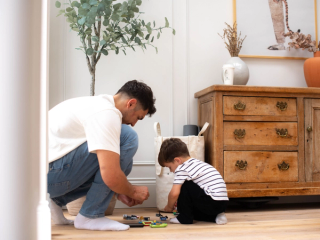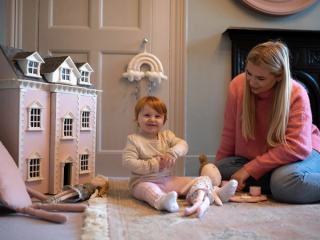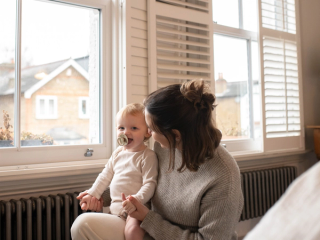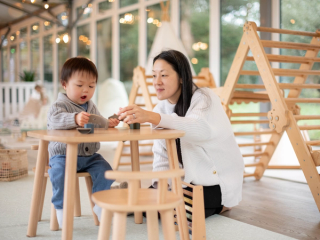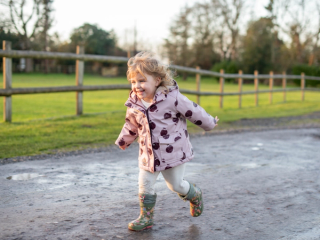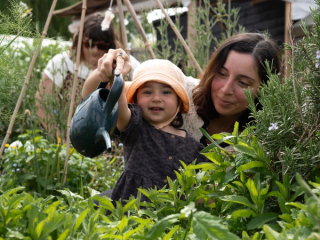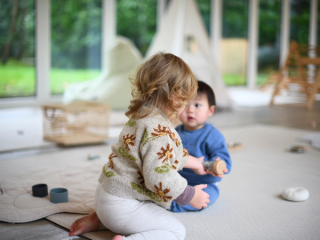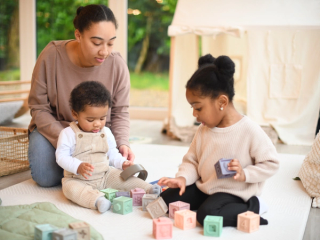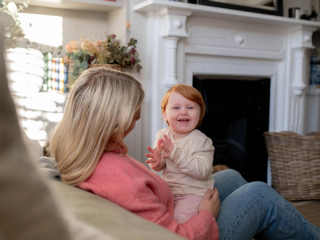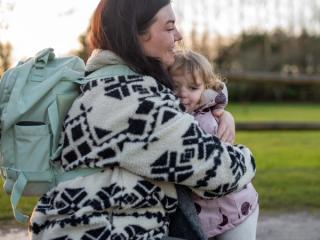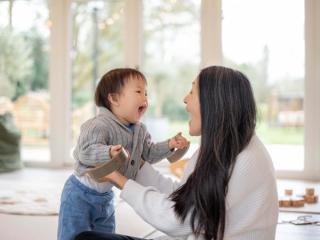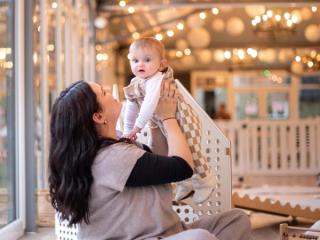
- Home
- Advice Hub
- Toddler
- Toddler Milestones
- Toddler Tantrums 101
Toddler tantrums 101: why they happen and how to handle them
Learn why toddler tantrums are a natural part of development and how to respond with calm, confidence, and compassion. Discover practical strategies to build emotional resilience and strengthen your connection.
Toddlers and ‘tantrums’ often feel like two sides of the same coin. One moment they are giggling at bubbles, the next they’re inconsolable because the banana broke in half. It’s exhausting, confusing, and at times overwhelming, but it’s also completely natural.
Through a balanced, compassionate approach like The Behaviour Balance System™ (TBBS), we can reframe and recognise tantrums as moments of dysregulation, essential stepping stones in our children's emotional and neurological development. With the right strategies, these moments can become rich opportunities for building trust, resilience, and emotional literacy.
Let’s explore together how science, compassion, and practical tools can help you navigate these big moments with confidence and care.
Why ‘Tantrums’ are a natural part of growing up
Science tells us that children under 5 are experiencing huge neurological shifts. Their emotional aspect of the brain (the limbic system) is racing ahead, while the thinking aspect of the brain (the prefrontal cortex) is still metaphorically under construction. This developmental gap means toddlers feel big emotions long before they can make sense of or communicate them effectively. ‘Tantrums’ are actually our children feeling dysregulated, something that all humans, big and small, experience. The term dysregulation refers to difficulties in managing and responding to emotions. Dysregulation is not manipulative or "bad" behaviour; it is unfiltered emotional reactions when internal worlds feel too big to hold inside.
The Behaviour Balance System™ encourages us to meet these moments not with punishment, but with patience, understanding, and practical support.
Setting the stage: prevention through connection
While dysregulation cannot (and should not) be entirely avoided, small preventative steps can help reduce intensity and frequency by nurturing your child's internal sense of safety.
Here are some TBBS top tips that you can put in place to support your children in navigating these emotional bumps in the road:
- Predictable patterns: Establish daily rhythms (not rigid routines) so toddlers know broadly what to expect.
- Emotional naming: Use language like, “You’re feeling cross because the block tower fell. That’s okay,” to build their emotional vocabulary.
- Empower with choices: Offer two simple options: “Would you like to hop or tiptoe to the car?” Freedom within boundaries builds autonomy.
- Connect before you correct: Physical connection like a warm hug or a gentle hand on the shoulder can often diffuse emotional build-up before it tips over.
Science tells us that predictability nurtures the parasympathetic nervous system (the "rest and digest" part of the brain), reducing the likelihood of full-blown dysregulation. So all of the preventative support we put in place lays the foundations for those smoother, more regulated moments.
Navigating the emotional bumps: responding to dysregulation
When an emotional eruption is in full swing, your child's body is in ‘emotional reaction mode‘ . They need your regulated presence far more than your words. Science tells us that children mirror the nervous systems of the adults around them - this is called co-regulation and it is the bridge to our children learning self-regulation. This means, how we feel during these challenging moments can impact how quickly their nervous system feels safe and cools down. When we combine our calm body with our conscious words our responses can be very powerful.
Here are a few TBBS Suggestions for keeping your cool:
- Ground yourself first: Before stepping in, take a deep, steady breath. Your emotions are contagious.
- Stay physically safe: If necessary, guide them away from danger without adding shame.
- Soften your stance: Lower your body to their level. Keep your voice low and soothing.
Accompany this with a few simple switches to what you say…
Instead of: “Stop that now!”
Try: “I can see you’re upset. I’m here, and I’m staying with you.”
Instead of: “You’re ok, don’t cry.”
Try: “It’s okay to feel upset. Your feelings are important.”
Body, brain, and behaviour: movement matters
Emotions are embodied experiences, like vibrations in the body. These vibrations feel huge for toddlers. What looks like chaos is often their body's way of discharging overwhelming energy.
We can support them in navigating this experience through providing them with ‘positive outs’, using things such as tactile tools. You can set up a “Balance Basket” in your home with items like playdough, squishy balls, or soft fabric they can press and squeeze. This offers children a varied sensory diet and helps with emotional regulation.
You can also plan movement breaks into your day. Children need to move around, so creating safe, playful ways to release energy is always a great source of support. You can try playing games that “stomp the big feelings” or a “shake it out” dance.
It is also important to provide opportunities for calm. Breathing together might sound boring but it can be both lots of fun and hugely impactful. You want to start by pretending to blow up an imaginary balloon or gently humming, helping them reconnect breath and body. Science tells usthat physical expression supports emotional regulation by calming the amygdala, this is the brain's emotional alarm centre. If you are looking for support in setting this up, head over to The Behaviour Bank which has a whole vault on supporting your children with this.
After the storm: repairing and building emotional literacy
The aftermath of a ‘tantrum’ is golden ground, although I know it might not feel this way as you are flooded with reliefthat it is over and emotional exhaustion from supporting the process. It’s where real emotional growth and trust-building occur. To make the most of this time with your child you could try out the following:
Take a moment, potentially with a cuddle, to reflect without judgment. We can sometimes skip over these experiences and avoid bringing them up again, in fear of ‘setting them off again’. However, this is such an important step for our children.This might sound something like:“You were really upset when we had to leave the playground. That was hard.”
As part of this process, bring in some problem-solving together. Helping our children plan for the future allows them space to recognise that these things are part of life, they are natural and they are ok. It also shows them that you are on their team and here to help, even when emotions feel big. This might sound something like: “That felt hard, next time, what could we do when you feel sad about leaving?”
Whilst supporting the ‘repair’ we can be faced by the challenge of owning our part. Yes, we need to go through that uncomfortable experience of admitting our own mistakes and sharing this with our children. It might sound like a minor detail, but it is an important step. Not only does it show our children that everyone makes mistakes, it gives them a clear model of how to own it and move on from it. This might sound something like: “I got frustrated too. I'm learning just like you are.”
Remember, repair isn't about blame; it’s about reconnecting and reinforcing that emotions are safe, manageable, and never a barrier to love.
Big feelings, bigger futures
‘Tantrums’ are not the enemy; they are emotional training grounds. Each time we approach dysregulation with compassion and balance, we’re helping our toddlers build the emotional muscles they will carry for life. Every feeling is valid, and every connection counts.
The Behaviour Balance System™ reminds us: emotions aren’t problems to be fixed; they are messages to be understood. When we respond with empathy, structure, and support, we lay the foundation for confident, resilient adults.
Through The Behaviour Bank™, we’re here to provide you with the practical scripts, strategies, and science-backed support you need to turn tantrum moments into milestones of emotional growth.
Advice & tips

Want to read more? Join the HiPP BabyClub for full access to this article.
As a BabyClub member, you'll get access to a range of exclusive benefits, including:
Monthly competitions
Discounts from our Partners
Expert advice tailored to your little one's age
Weaning recipes
HiPP shop discounts*
*10% off HiPP's online shop does not apply to our First Infant, Anti-Reflux or Comfort Formula Milk.
Important notice: Breastfeeding is best. Follow on milk should only be used as part of a mixed diet from 6 months. Talk to a healthcare professional.




